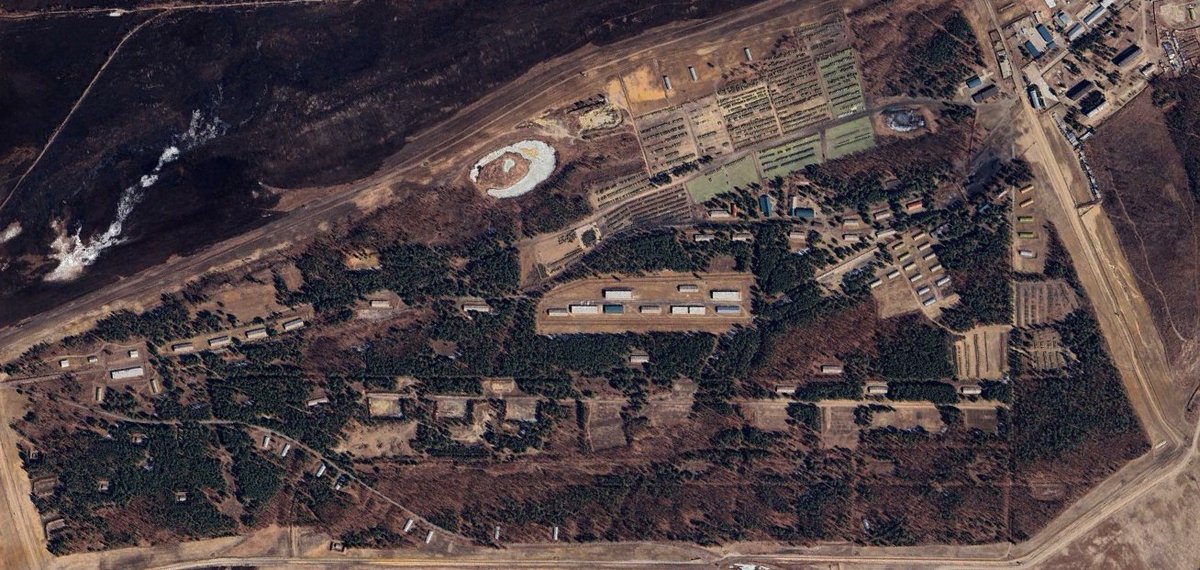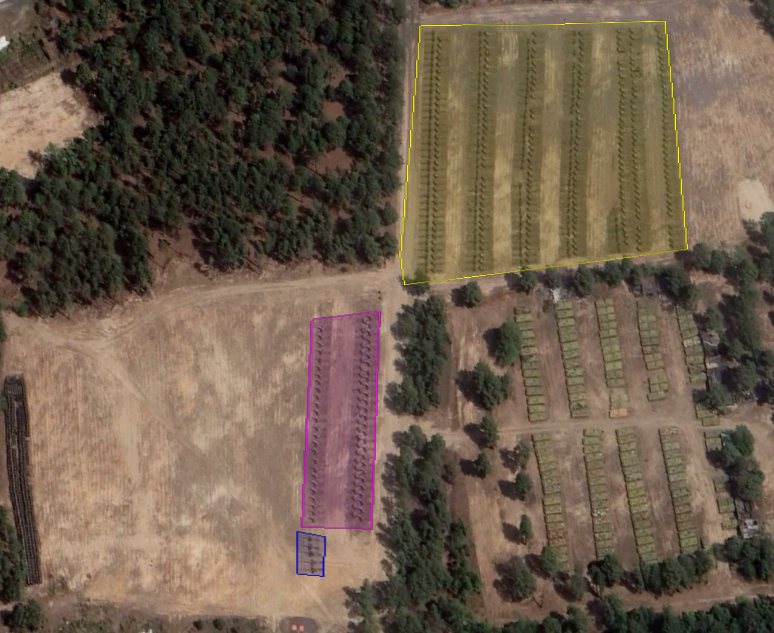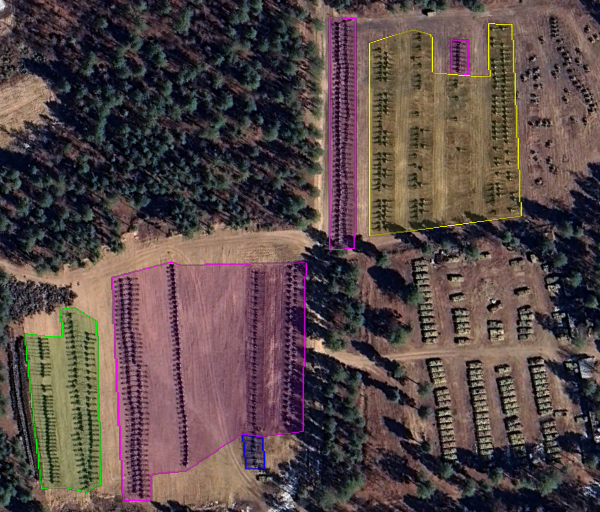1/ Russia has severely depleted one of their largest towed artillery storage bases. In updated images it is visible that they have removed about 60% of the stored guns and half of the remaining guns might be unusable. Data and IDs below.⬇️ 

2/ The updated Google Earth image is very clear, which helps a lot with identifying the guns. The IDs for 2024 are probably very accurate, but I am still not totally confident in my identififcations in the pre war footage. 

3/ Here is a comparison of one of the spots pre war and 2024, with D-30 (yellow), MT-12/T-12 (green), 2A36 (red) and 2A65 (orange). In the image from March 2024 there are only some M-30 (pink) and D-30 left.




4/ Here you can see more spots storing 2A36, MT-12/T-12, M-30 and D-1/D-20 (blue). Almost all guns have been moved from here, either to a different part of the base or removed completely.




5/ Most of the remaining towed guns were moved to this spot, which only had few M-30, D-30 and 6 D-1/D-20 in pre-war images.




6/ As you can see half of the remaining guns are 122mm M-30 which was one of the main artillery pieces of the red army during WW2. They are likely mostly useless today, since they probably shouldn't use modern ammunition, although Russia might have some old ammunition in storage.
7/ Additionally it is possible that some of the remaining guns are not usable, since they have been in storage for a long time, although it is not possible to accurately asses the effects of that in the satelite footage. Cannibalization is also possible.
8/ If I had to make a prediction I would guess that likely most of the remaining D-30s, MT-12 and D-1/D-20 will be removed during 2024 and leave behind about 400 units mostly consisting of M-30s that wont be removed at all.
9/ I havent yet found a reliable way to tell D-1 and D-20 apart, since they look very similar on sat images. The size difference can only easily be spoted if they are next to each other (image artillery Museum St. Petersburg), since the measuring tools a very inaccurate. 

10/ Additionally it is possible that there are other models in storage, which are stored in the same position and have similar ascpect ratios, such as M1937 (ML-20) and the M1938 (M10).




11/ There were also ~200 mortars and ~200 SPGs at the base which have all been removed already, except for a very low number of 2S1.
@Strien9 Unfortuntely the image got updated yesterday after I had posted the D-30 thread. Many of the other bases dont have images that are as clear as the new one from this base so there will likely be more ID changes in the future.
12/ There is also a large pile of scrap and wheels, which could indicate that they are cannibalizing some of the guns and only take the "good" parts, although this is just speculation. 

• • •
Missing some Tweet in this thread? You can try to
force a refresh
















